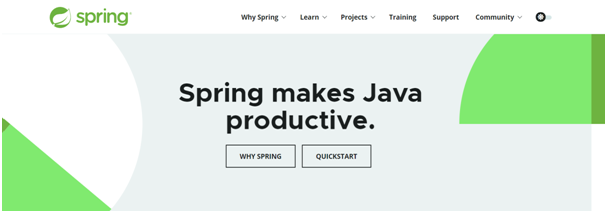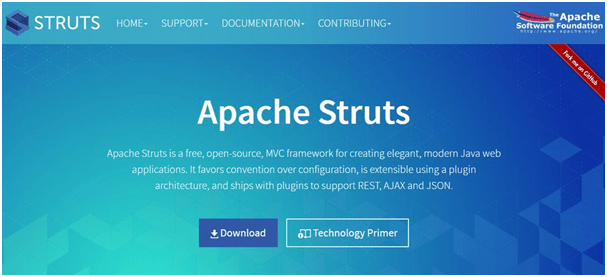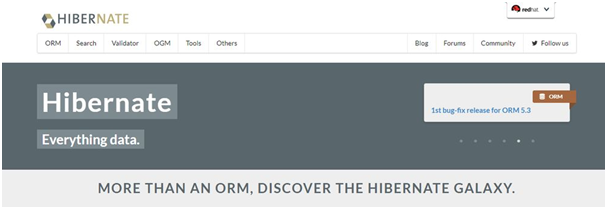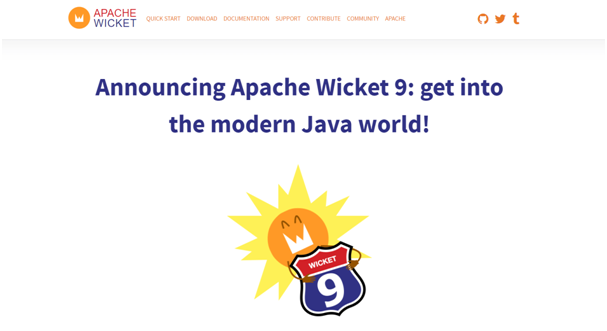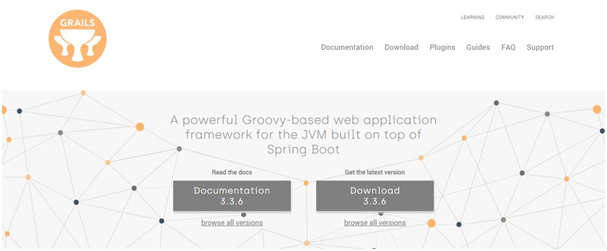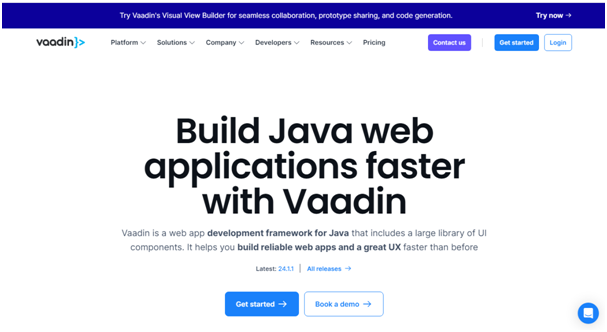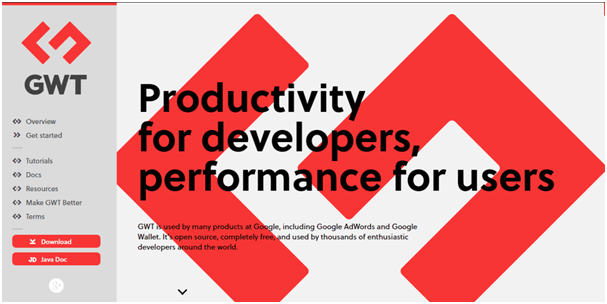
It’s been a while since the initial release of Java but still, the programming language has managed to stay reliable in this modern age. Maybe the various benefits offered by Java make it one of the most popular languages among developers.
You can use Java to create robust and efficient web and mobile applications. Along with that, it also helps in creating JVM-based microservices and rest APIs. Java is easy to use so you can either write the entire codebase from scratch or just use the Java development frameworks to speed up the development process. But the real confusion lies in which Java framework best suits your project.
In this article, top Java frameworks are listed which are trusted by most Java developers worldwide not just because they come with many but also because they deliver results better than expectations.
Top 5 Java frameworks
1. Spring Framework
Spring is the first framework in our list and probably the only one that has the most active community. Spring comes with a huge ecosystem that developers can leverage to build microservices, web services, and other Java applications.
Initially released as a dependency injection tool, over the years, Springs developed into a fully functional development framework. All the generic tasks like handling exceptions and establishing database connections are supported with an all-inclusive programming and configuration model that is provided by this Java-based framework. Kotlin and Groove can run on JVM so, obviously, this framework supports both of these programming languages too.
Being able to build enterprise applications and having support for many platforms, Spring has a steep learning curve. Because to build enterprise-grade applications, this broad framework intends to offer a solution for every task within.
Each development consists of multiple tasks but not every task is worthy of the attention of an expert Java developer. Many of them are ignored because they are mundane, especially if it’s a small project.
In such a case, Spring Boot can come in handy. It allows you to Spring up your application very fast with very little configuration. Spring framework can also come in handy for the creation of loosely coupled modules. It is possible because Spring can control custom-written code by using the IoC software design principle.
Pros:
- Strong active community
- Utilizes Plain Old Java Objects
- Loose Coupling
- Extensive documentation
- Easy-to-test applications
- Flexible configuration
Cons:
- You have to write a lot of Boilerplate code if you don’t have Spring Boot
- Complex framework
- Have a Steep learning curve
2. Struts
Struts is a feature-rich framework that is developed and maintained by Apache Software Foundation. This platform has support from such a large community that most often it is compared with Spring to decide which one of them is the best Java-based development framework. You can create enterprise-level applications that are easy to maintain using Struts.
Struts have a plugin-based architecture and follow MVC-based software design patterns. So, if any project requirements arise, you can use the plugins to extend the capability of this Java framework. Struts plugins are JAR packages which means they are portable and you can add them to the classpath of your application. You can get a few plugins in-built into the frameworks and if the need arises, you can arrange others from third parties.
If you want to perform any tasks that are not inherently built into the framework, integrate Strut with other Java frameworks and you are good to go. You can also use a variety of client-side technologies with Strut such as Jakarta Server Pages for the front-end development of your application.
On the other hand, Strut has limitations and cannot help you build any kind of server-side components that can render the front end. You have to look for a framework that has different architecture like Wicket or Tapestry.
Pros:
- Supports various web technologies
- Easily extendable using plugins
- Convention over configuration
- Seamless integration with other Java tools and frameworks
Cons:
- Does not possess any type of security mechanism
3. Hibernate
You can now improve communication between relational database management systems and Java programming language using Hibernate. It is an object-relational mapping framework.
Object-relational impedance mismatches are common occurrences when you are working with an object-oriented language like Java. Both RDBMSs and OO languages manage their data differently so mismatch problems are bound to happen.
A mismatch problem is when your object-oriented model shows that you have more classes in comparison to what is shown in the table of your relational database. This happens because the data is structured by OO languages based on a hierarchy of objects whereas relational databases tend to show the same data in tables.
You can overcome this problem of mismatch by using Hibernate as it offers a framework that aims to achieve persistence. Initially, Hibernates was just built to work with relational databases but with the advent of newer versions, it supports NoSQL databases as well.
Hibernates also provides some amazing tools like a mapping editor, database reverse engineering tool, and a Hibernate console that every Java developer wishes to work with.
Pros:
- Object-oriented interface
- Automatic versioning
- Supports multiple fetching strategies
- Timestamping
Cons:
- When complex queries arise, their performance decreases
- Steep learning curve
4. Apache Wicket
Wicket allows you to write pure and elegant Java and HTML code to create user-friendly applications. Apache software foundation maintains this Java framework just like Tapestry and Struts.
Being a component-based framework, Wicket enables you to create reusable pages and components like forms, links, buttons, images, and more. All the components in Wicket are ordinary Java objects as it uses a POJO data model. The reusable packages of Wicket consist of bundled components that can be combined with custom CSS and JavaScript code.
In-built Ajax functionality enables real-time updating without the need to write a single code line. If you have a global clientele then Apache is helpful to you as it can support over 25 languages.
The Wicket framework focuses on handling secure URLs. All the component paths in Wicket are session relative and these URLs don’t reveal any kind of sensitive information.
Pros:
- Unit test for frontend code
- Seamless integration with HTML
- Separates Logic and Markup
- JavaScript or XML configuration files are not required
- simple state management
Cons:
- Have a relatively small community in comparison to other Java frameworks
- Not enough documentation, learning materials, or tutorials are available
5. Grails
Using an object-oriented programming language, Grails is a Java-based web app development framework that focuses on enhancing the productivity of the developer. The syntax of Grails is very compatible and it can be compiled to Java Virtual Machine bytecode.
Although Grails runs on Groovy-based code, you won’t face any problem using it with other Java-based technologies like Jakarta EE containers, JDK, and more. Because with Groovy, you can achieve more with less coding. Grails is built on top of Spring Boots which means its productivity features like dependency injection to your advantage.
Sensible defaults, opinionated APIs, and convention over configuration are some of the modern software development principles that Grails follows. And if you need any kind of help, Grails has a lot of learning resources to help you along the way including detailed documentation (which is easy to read) and step-by-step guides. The framework also offers an extensive plugin library that can ease up your development process.
Additionally, Grails also allows you to create your plugins and use the Grails IDE support for various platforms like IntelliJ IDEA, Sublime, Eclipse, and more.
Pros:
- Async capabilities
- Seamless integration with Java tools and libraries
- Application profiles for Angular and React
Cons:
- To use Grails for app development, you must have working experience or basic knowledge of the Groovy programming language
6. Vaadin
If there is any framework that allows Java developers to implement HTML5 web UI then it is Vaadin. Being open-source, this Java platform offers a web development framework, tools, application starters, and a set of web components.
These web components, which are considered to be the core of Vaadin, can be easily customized by developers to build highly versatile code for a high-performing desktop or mobile app.
To manage routing and client-server communication, Vaadin provides Vaadin flow as a part of the Java framework. It also enables you to write your web app program in Java without any hassle of CSS or JavaScript.
If a user enables automated communication between the browser and server then the UI components would take care of the user’s browser activities. No matter what IDE you use for Java development, it can be easily integrated with Vaadin components.
Additionally, the developers can use Java and HTML templates effectively to build reusable UI components. For that, you have to first map these components in the database with the help of abstraction layers and type-safe Java code. The mapping will be done by data binding API.
Advantages:
- Easy integration with the Java Spring framework
- Server-side
- Plug-in support
- Layout, listeners, and component types
Disadvantages:
- JS code grows larger
- Multi-window support is not available
7. Google Web Kit (GWT)
Google Web Toolkit is a Java development framework developed and managed by Google. The company has used this framework for the development of robust applications like Google Wallet, Adsense, Blogger, and AdWords.
The developers can also leverage this framework to create and test Ajax apps that use Java programming language. It is important to note that GWT can come in handy for building types of complex web apps that are used in trading banking and more.
One of the best things about using GWT is that you can convert the Java code into a customized JavaScript Code based on the browser. This framework also enables you to write code for high-performing web apps in less possible time.
GWT comes with extensive widget libraries. So, developing a business logic for your app will be a piece of cake. The GWT framework comes with three types of components namely Java to JS compiler, the JRE emulation library, and the GWT UI library.
Advantages:
- Built-in IDE support
- Easy to learn
- A wide range of libraries is available
- Perfect for building responsive web apps
Disadvantages:
- Slow compilation.
- Not all interfaces and functions are ready for use.
Final words
So, that was a short list of top Java frameworks. We discussed their architecture, features, working, and pros and cons. I hope it can help you choose a suitable framework for your upcoming project.
But first, you must have a clear understanding of your own goals, budget, team’s skills, and most importantly project requirements. Compare them against the list of frameworks and you will easily understand which framework has the capabilities to help you develop your product.
You might also like our TUTEZONE section which contains exclusive tutorials on making your life simpler by using technology.

